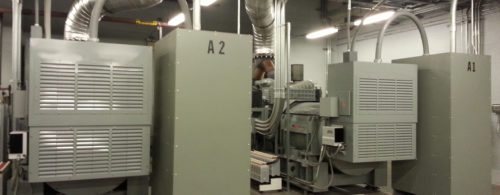Improving Genset Availability By Detecting Bad Batteries Early
Failure to start is the most significant—and avoidable—cause of diesel generator malfunction. And battery failure is the leading cause of diesel generator failure. More than 80% of failures to start are caused by battery problems. This is particularly troubling. Genset failure can cause huge economic losses, and in some cases, loss of life.
Failure to start is the most significant—and avoidable—cause of diesel generator malfunction. And battery failure is the leading cause of diesel generator failure. More than 80% of failures to start are caused by battery problems.
This is particularly troubling. Genset failure can cause huge economic losses, and in some cases, loss of life. What’s needed is a practical, cost-effective way to detect the need for battery replacement before engine start failure. An organization’s investment in a genset virtually defines the application as critical and is costly, but this Achilles heel of the system has changed little since the 1800s, with no effective system of battery failure detection.
At least until now. While today most gensets do not include any means that detect if the starting battery has deteriorated and may not be fit to start the engine, there is a new technology to remedy the situation. Stored Energy Systems has introduced two new capabilities bundled into a new dual microprocessor-controlled battery charger. The EnerGenius IQ charger includes a battery monitoring system and site data logger. The proven battery midpoint monitoring technology reduces the ambiguity associated with simple voltage readings and delivers earlier warning of battery problems than before. Midpoint monitoring divides the battery in half for measurement and continuously compares the voltage of each half of the battery to the other. An alarm is activated if voltage deviation exceeds a pre-determined range.
In addition to providing early warning of battery failure, the charger logs all relevant site events to aid in troubleshooting. For example, the record of battery temperature since installation helps determine if excessive temperature has affected battery life. It records minimum discharge voltage during engine start to allow charting of the battery’s deterioration over time—enabling service personnel to proactively replace the battery before it gets too weak to start the engine. The record of alarm history plus nearly all available analog values is kept indefinitely to enable later analysis—should a site problem require investigation.
Battery monitoring and data logging technology will significantly reduce the incidence of start failure and cut business risk. It also will reduce the number of emergency repair calls, plus improve customer satisfaction with genset products. And according to SENS, bundling these features into the charger means they ensure 75% to 90% lower cost than comparable features in separate standalone boxes.
Lead-acid battery monitoring technology has evolved to the point where the Institute of Electrical and Electronics Engineers issued a standard in 2005 to describe the various assessment methods.
To sum up, end users and service organizations may use this warning system to proactively replace batteries batteries based on real data, rather than rule of thumb. Commercializing it and deploying battery-monitoring technology will reduce the business risks and number of emergency calls—and improve customer satisfaction.
The Advantages of Monitoring
• Reduces the ambiguity associated with simple voltagereadings.
• Delivers precise voltage regulation with high-accuracy charging.
• Logs all relevant site events to aid in troubleshooting.
• Charts battery’s deterioration over time.
Do you have experience and expertise with the topics mentioned in this content? You should consider contributing to our CFE Media editorial team and getting the recognition you and your company deserve. Click here to start this process.




